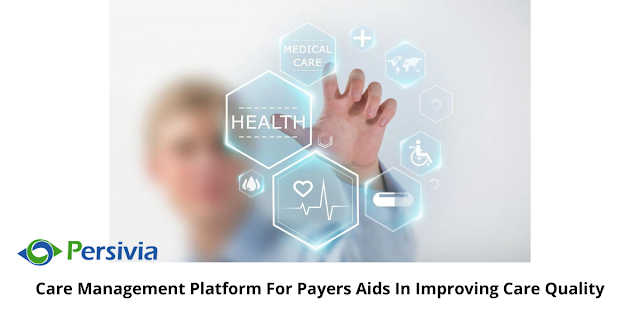Care Management Platform For Payers Aids In Improving Care Quality
Healthcare organizations are working around the clock to achieve the triple aim target by reforming the country's healthcare delivery system. They are working hard to successfully treat patient groups while lowering health risks and healthcare costs. Care Management Platform has emerged as a critical method of influencing the health of a specific population.
Care Management (CM) has developed as a dominant practice-based
model for population health management. The Care Management Solution is
based on the premise that appropriate interventions for people within a
specific community would minimize health risks and lower healthcare costs.
Care Management Platform is an innovative
collaborative, patient-centered monitoring system to helping the patient and
their support networks in more effective manner to manage health conditions. It
also includes the collaborative care procedures required to assist in the
management of chronic diseases.
The three primary tactics for improving new or modified Care
Management Solution are as follows:
(1) Determine the population(s) having controllable risks.
(2) Align Care Management operations according to population's
requirements
(3) locate, train, and incorporate suitable employees to provide
the required Care Management services.
Care Management for Payers Can Improve Care Service Quality
Care Management for Payers helps to keep improving
value assessment, prioritize the precise type of healthcare expenditure, and
strengthen consumerism, while using operations, command, and control
indicators.
According to the McKinsey researchers, care management entails
payer-driven initiatives to connect with specific individuals and their care
ecosystems in order to promote and facilitate high-value decisions.
The researchers urged payers to take four steps to accomplish this
larger goal for care management.
1. Payers must focus on high-potential sources of value
Care management can help payers increase revenue by enhancing
clinical accuracy, addressing care gaps, boosting Consumer Assessment of
Healthcare Providers and Systems (CAHPS) performance, buy-ups, and user
motivation and retention.
2.
Instead of focusing just on reducing total healthcare spending,
payers should use care management to target clinically incorrect healthcare
spending.
Payers can avert underfunding for individuals with high needs and
invest heavily in those members with low needs by trying to reach the health
inflection points, such as when a member is scheduled for surgery.
3.
Payers should accept consumerism.
Improved member identity metrics, enhanced member contact details
and channels, psychographic segmentation of members, and an interaction first
approach can boost consumerism and improve a payer's care management strategy.
4. Payers should use operational metrics and standards to oversee
their care management systems.
Integrating staffing levels and best practices into operational
processes can help payers improve their care management approach.




Comments
Post a Comment